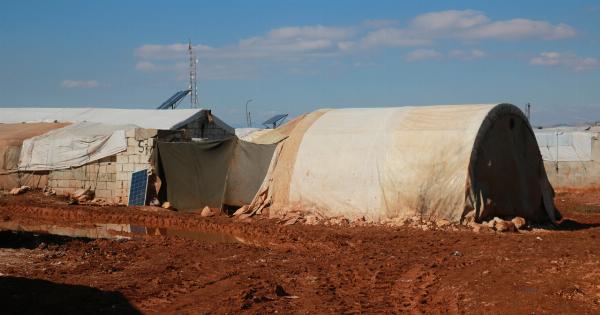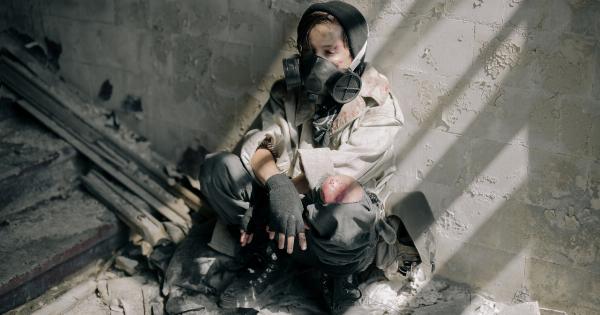Thermal management is an essential aspect of many industries, including electronic devices, automobiles, construction, and HVAC systems. A failure in proper thermal management can lead to equipment failure, safety hazards, and energy inefficiency.
However, identifying thermal warning signs is crucial to implement preventive measures and avoid severe consequences.
High Temperature
High temperature is the most apparent thermal warning sign. If you notice that the temperature exceeds the normal range, it indicates that the system is working beyond its capacity, which can lead to equipment breakdown or permanent damage.
For instance, electronic devices can encounter high temperatures if they operate for a prolonged period or operate in a poorly ventilated or hot environment. High temperature can also indicate a blockage in the air ducts or vents in HVAC systems.
Therefore, it is essential to measure the temperature regularly and take prompt corrective measures to prevent energy waste, equipment damage or malfunction, and safety hazards.
Visible Smoke
Smoke can indicate many issues, including thermal management problems. When components inside systems like electronic devices or automobiles heat up and reach their failure point, it can lead to smoke.
Similarly, when flammable materials come in contact with high temperature, it can also produce smoke. Smoke can indicate that an electrical circuit has failed, potentially creating a safety hazard. Therefore, if you detect visible smoke, it is critical to stop the system and identify the source to avoid potential fire or equipment damage.
Odor
Unusual smells or odors can also indicate thermal warning signs. In some cases, overheating electronic components can emit a burning smell that signifies that the device is overstressed.
Similarly, HVAC systems that operate for a prolonged period or those that require maintenance can produce foul odors due to mold growth or poor ventilation. In construction projects, the odor of cured concrete mixed with high humidity can indicate a thermal reaction that requires corrective measures.
Therefore, identifying and troubleshooting potential odor issues is essential to prevent equipment damage, energy waste, and safety hazards.
Noise or Vibrations
Noise or vibrations can indicate thermal problems in various settings. In automobile systems, a faulty cooling system can cause the engine to overheat, which can produce a knocking sound.
Similarly, electronic devices can generate high-pitched noises that suggest overstressing the capacitors or cooling fans. In construction, concrete that cures too rapidly can create popping or cracking sounds, indicating thermal reactions.
Therefore, if you hear unusual sounds or detect vibrations, it is crucial to inspect the system to prevent equipment malfunction or breakdown, safety hazards, and energy waste.
Poor Performance
Poor performance is an indirect thermal warning sign that indicates the system is inefficient or working beyond its limits.
For instance, electronic devices that struggle to run even routine applications can indicate that the system’s thermal management is not adequate. Similarly, HVAC systems that fail to maintain the desired temperature or require frequent maintenance can indicate thermal issues.
In the construction industry, drying concrete that takes an extended period or that does not harden correctly can indicate a thermal reaction that needs to be corrected. Therefore, monitoring the system’s performance regularly is essential to identify potential thermal warning signs and prevent further damage or safety hazards.
Leakage or Condensation
If you notice water leakage or condensation in or around the industrial systems, it can indicate an underlying thermal issue. In automobiles, leakage or condensation from the cars’ radiator or engine can signal a failed cooling system.
Similarly, in HVAC systems, leakage or condensation from the air ducts or vents can suggest insulation problems or heat exchanger malfunction. Construction projects that produce condensation or leakage can indicate improper material mixing or handling or environmental conditions that need corrective measures.
Leakage or condensation can result in equipment malfunction, energy waste, and safety hazards. Therefore, identifying and troubleshooting these issues promptly is critical.
Increased Energy Consumption
A sudden increase in energy consumption can be a warning sign of an underlying thermal problem. When the system operates beyond its capacity, it can consume a vast amount of energy, leading to increasing electricity bills and environmental concerns.
For instance, electronic devices that consume more power than usual can indicate that the internal components are overheating, leading to wasted energy and equipment malfunction. Similarly, HVAC systems that consume more energy than required can indicate blockage in air ducts or low refrigerant levels.
Construction projects that rely on energy-intensive materials or processes can experience increased energy consumption due to thermal reactions, resulting in energy waste and increased cost. Therefore, monitoring energy consumption closely is essential to optimize thermal management and prevent energy waste and equipment failure.
System Shutdown
System shutdowns can occur due to many reasons, including thermal issues. When the system overheats or is subjected to environmental or operational conditions beyond its capacity, it can shut down to protect itself from damage.
In electronics, overheating can lead to a shut down to prevent permanent damage to the components. In automobiles, the engine management system can shut down to prevent critical damage. Similarly, in HVAC systems, the system can shut down to protect itself from overheating.
In construction, the curing process can shut down if the environment or materials reach their critical limits. Therefore, if you encounter system shutdown, it is crucial to identify and rectify the underlying thermal problem to avoid equipment malfunction and safety hazards.
Loose or Burnt Wires
Loose or burnt wires can indicate potential thermal issues. When wires become loose, it can lead to an electrical arc that can create heat and cause the wires to burn or melt.
In electronics or automobile systems, loose or burnt wires can cause system failure or fires. Similarly, in HVAC systems, loose or burnt wires can prevent optimal system performance and safety issues. Construction projects that involve electrical components can experience loose or burnt wires due to environmental conditions or human error.
Therefore, detecting and repairing loose or burnt wires is necessary to prevent equipment malfunction, safety hazards, and energy waste.
Inconsistent Readings
Inconsistent readings can indicate underlying thermal problems. When sensors or equipment do not provide consistent readings, it can indicate that the system is experiencing thermal instability.
For instance, in automobile systems, inconsistent temperature readings can indicate a malfunctioning cooling system. In electronic devices, inconsistent temperature readings can indicate overheating or equipment malfunction. Similarly, in HVAC systems, inconsistent temperature readings can indicate blockage in the air ducts or refrigerant leakage.
Construction projects that rely on temperature-sensitive materials or processes can experience inconsistent readings due to thermal reactions. Therefore, monitoring consistent sensor readings is necessary to maintain optimal thermal management and prevent equipment failure and energy waste.
Conclusion
Thermal warning signs are crucial to identify and rectify to maintain optimal equipment performance and prevent safety hazards and energy waste.
It is essential to monitor the system’s temperature, performance, energy consumption, and other critical parameters regularly and take prompt corrective measures to avoid costly repairs and equipment replacement. Proper thermal management can enhance equipment longevity, safety, and energy efficiency.






























